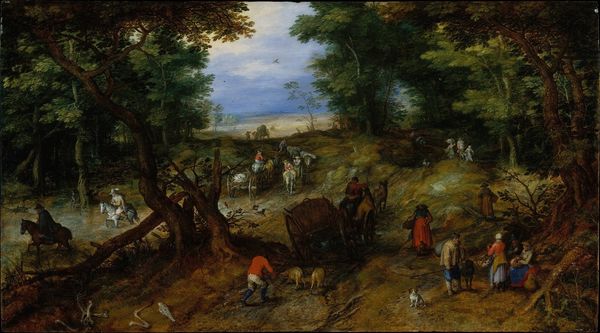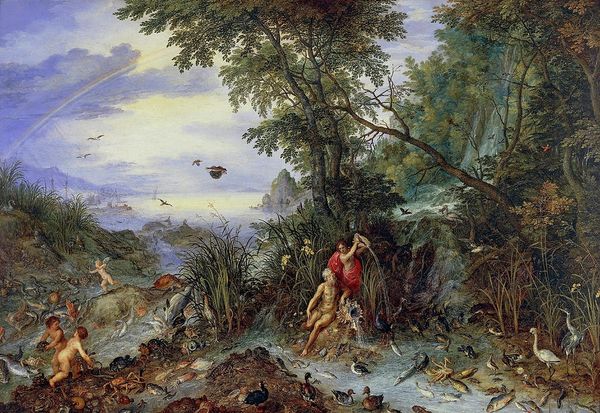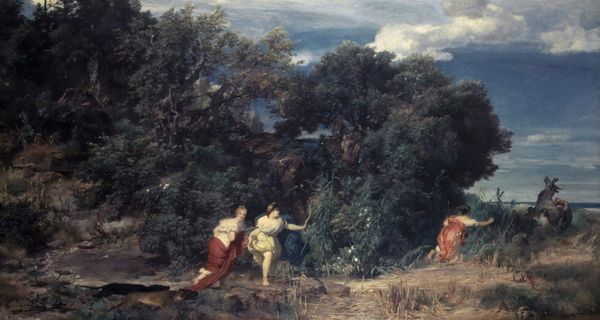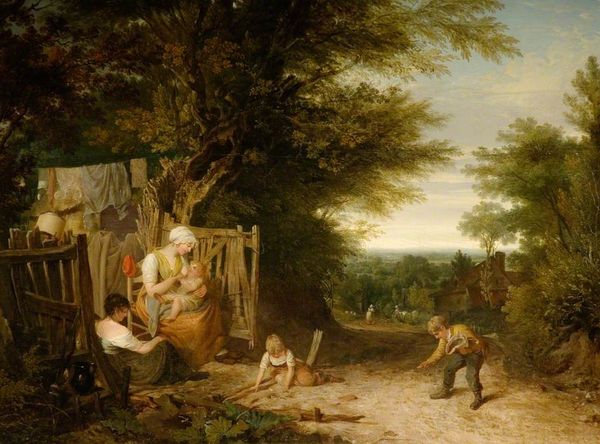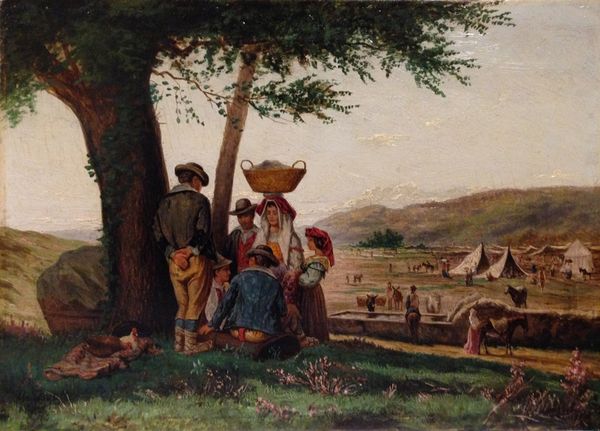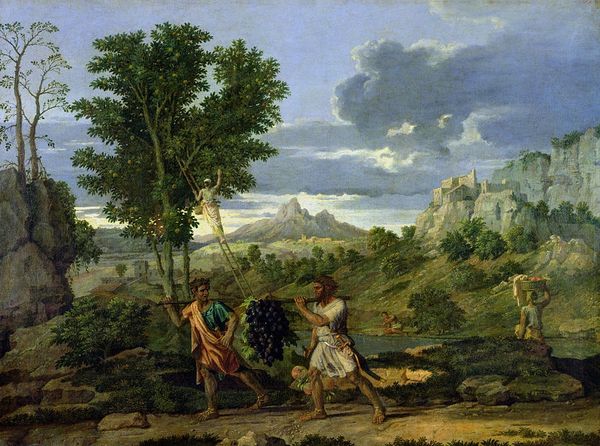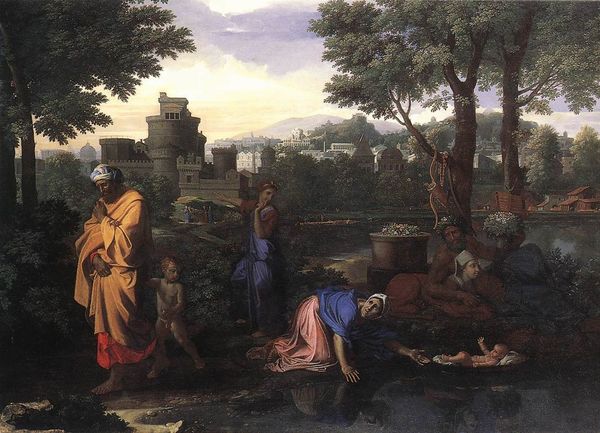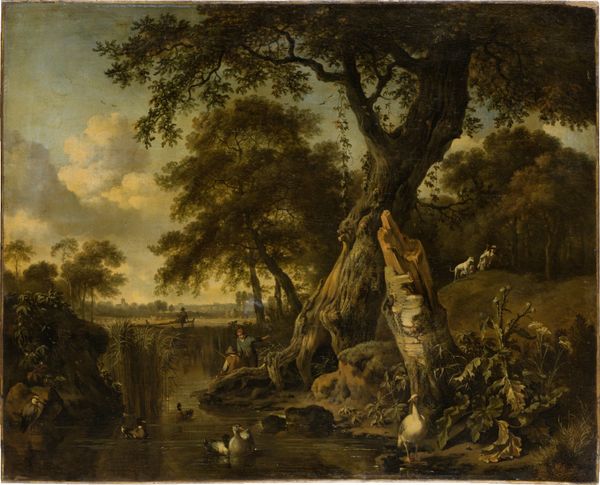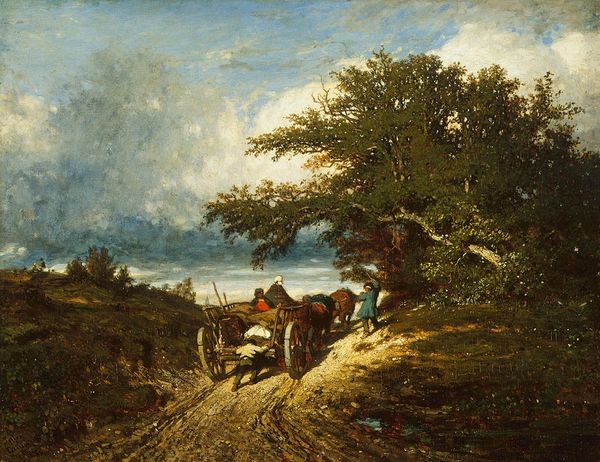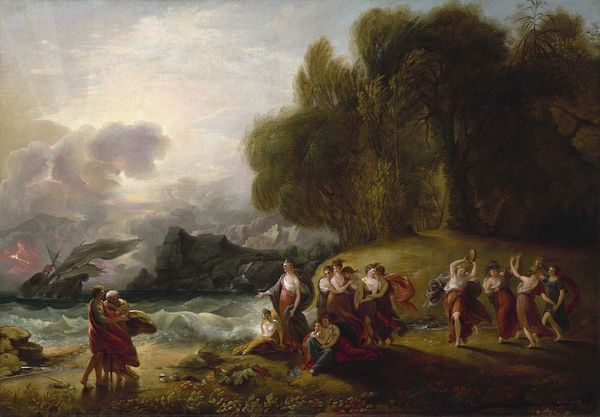
Landscape with the Fall of Icarus 1560
0:00
0:00
pieterbruegeltheelder
Royal Museums of Fine Arts of Belgium, Brussels, Belgium
painting, oil-paint
#
painting
#
oil-paint
#
landscape
#
genre-painting
#
northern-renaissance
Dimensions: 73.5 x 112 cm
Copyright: Public domain
This might look like an ordinary landscape, depicting a ploughman and shepherd at work against a background seascape. A majestic ship sails towards the coast, while a small city is nestled among the white mountains of the distance. But there’s something else at play here… can you notice it? Take a look at the sea towards the lower right corner of the canvas. There are a pair of legs disappearing into the waves! ‘Landscape with the Fall of Icarus’ is an iconic oil painting from 1560. It’s one of the most famous works emerging from the Dutch and Flemish Renaissance. Although traditionally attributed to Pieter Bruegel the Elder (c.1525-1569), the artist's role in the creation of this painting is now questioned by art historians. According to the Belgium Royal Museum of Fine Arts, "It is doubtful the execution is by Bruegel the Elder, but the composition can be said with certainty to be his.” ️ The painting depicts the story of Icarus, a figure in Greek mythology. Icarus’s father created wings from beeswax and warned his son not to fly too close to the sun. The excitable Icarus ignored his father’s warning, and the wings began to melt. He eventually plummeted into the sea. 🪽 The tale is a clear metaphor, offering a warning against ignorance and over-ambition. Here, however, the artist does not focus on any moral message. Instead, they have emphasised the landscape itself. The landscape is depicted from an elevated viewpoint, similar to a bird's eye perspective. This painting is a prime example of the ‘world landscape’ (‘weltlandschaft’) genre. World landscapes often incorporate mythological scenes, but they prioritise the natural setting over the figures or narrative.
Comments
No comments
Be the first to comment and join the conversation on the ultimate creative platform.
